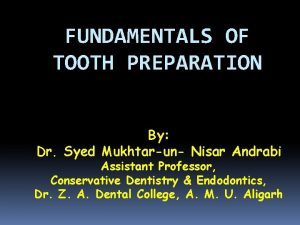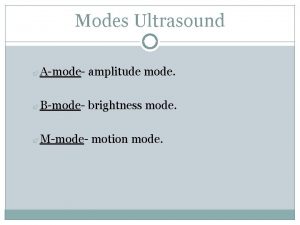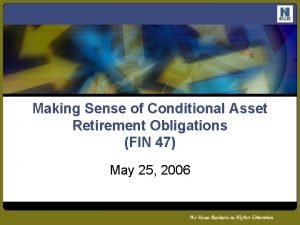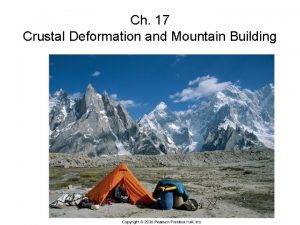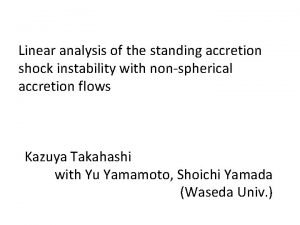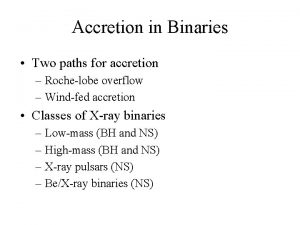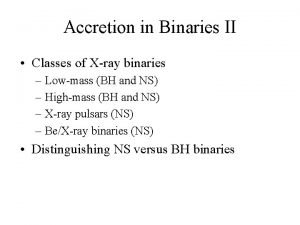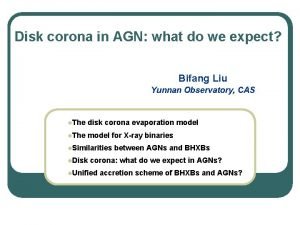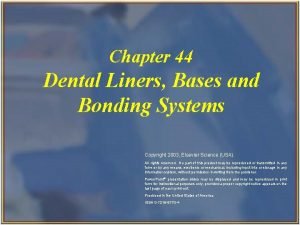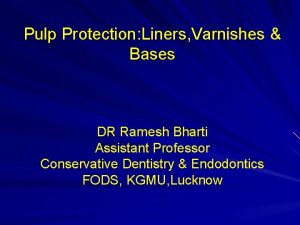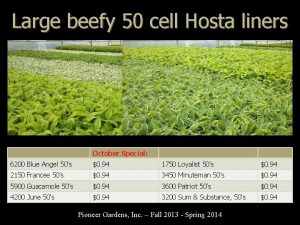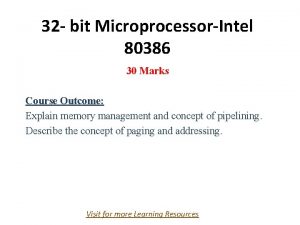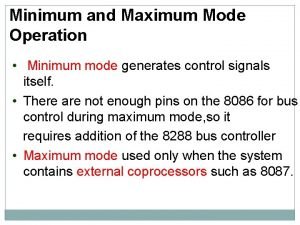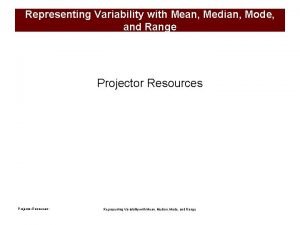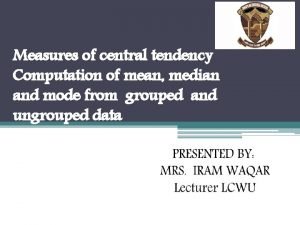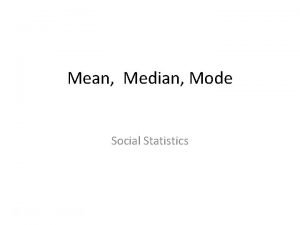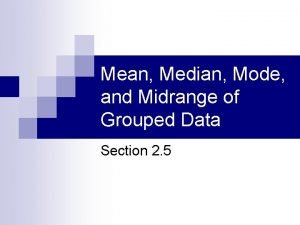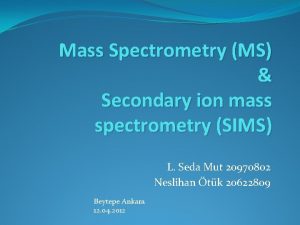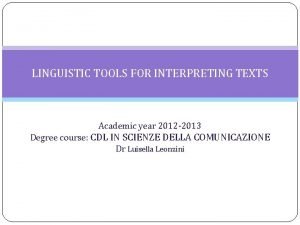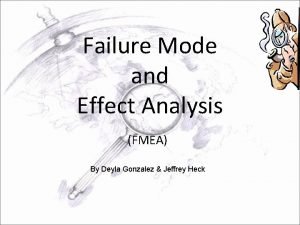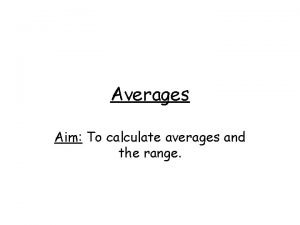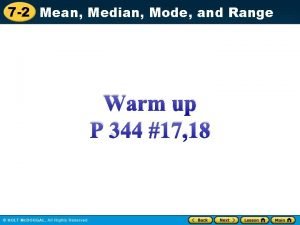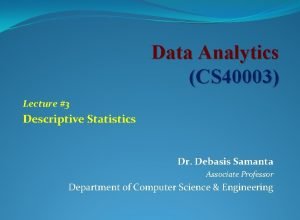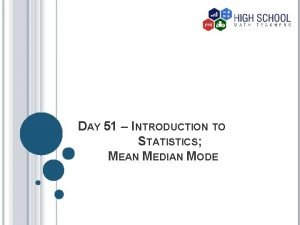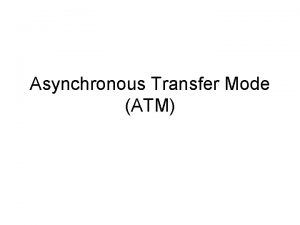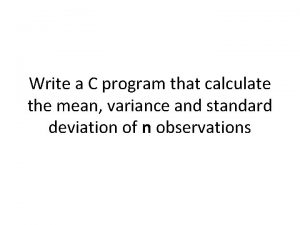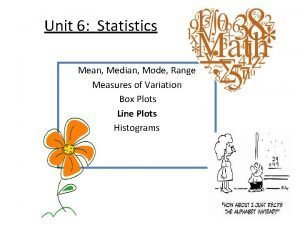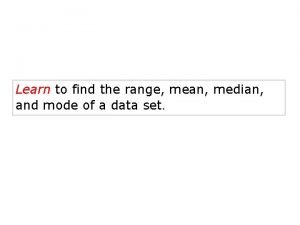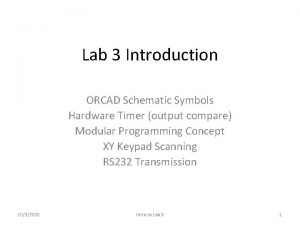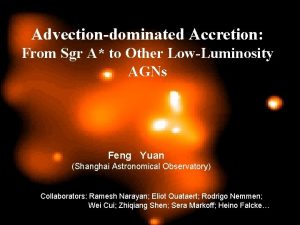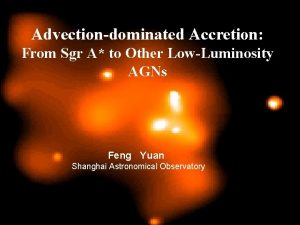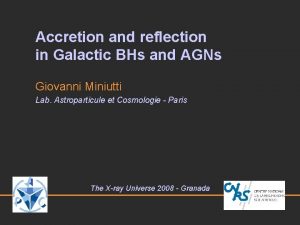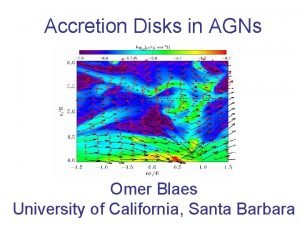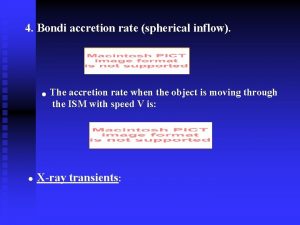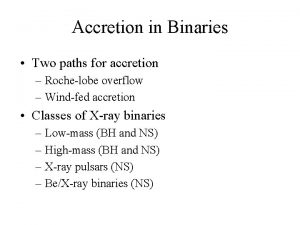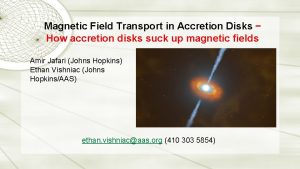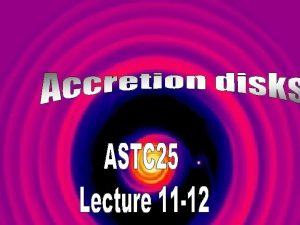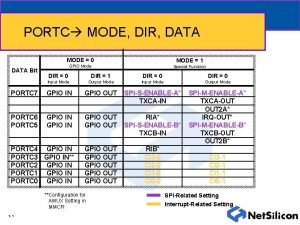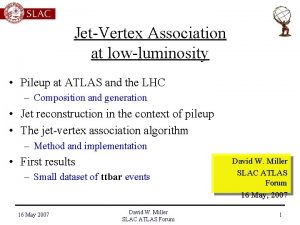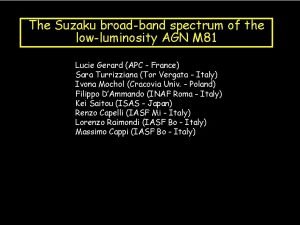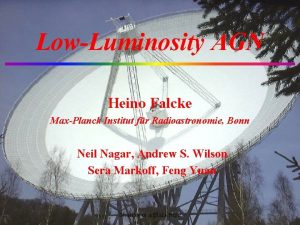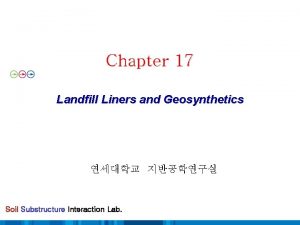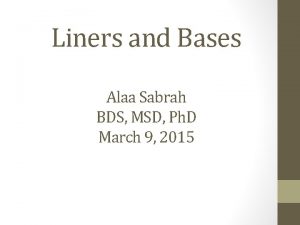LINERs lowluminosity AGNs their accretion mode and their
































![aox = 0. 4 log [L(2 ke. V) / ………. . L(2500 A)] aox = 0. 4 log [L(2 ke. V) / ………. . L(2500 A)]](https://slidetodoc.com/presentation_image_h2/7db4354155e5ae89889d8e31e68f0def/image-33.jpg)


















- Slides: 51

LINERs (low-luminosity AGNs), their accretion mode, and their potential as a source of persistent energy feedback. Dan Maoz See astro-ph/0702292

Marconi et al. , 2004 Shankar et al. 2004 Black holes grow during their active phases, as quasars and Seyferts; High radiative efficiency (~0. 1); Brief (tacc~108 yr) active phase

Kollmeier et al. (2006): L~ 1/3 LEdd

accretion mode: (geometrically ) thin accretion disk big blue bump

What do the black holes do the rest (99%) of the time? Surprisingly little…

M 32; Ho, Terashima, & Ulvestad (2003) MBH=2. 5 x 106 Msun stellar mass loss: ~10 -6 Msun/yr Bondi accretion: ~3 x 10 -7 Msun/yr Lacc=(e/0. 1)1040 erg/s But LX=1036 erg/s =3 x 10 -9 LEdd

ADAF CDAF ADIOS Outflow Radiatively inefficient accretion flows (RIAFs) Ho (2003)

But do RIAFs really exist? Study low level activity at different wavelengths…

M 32; Ho, Terashima, & Ulvestad (2003) X-rays: MBH=2. 5 x 106 Msun LX=1036 erg/s =3 x 10 -9 LEdd

Radio: Nagar et al. (2003)

Nagar et al. (2002)

NGC 4579; Barth et al. (2001)

Most common: LINER (low ionization nuclear emission-line region)

LINERs are very common in bulges Ho et al. (1997); Yan et al. (2006) Many of our best friends are LINERs…


M 87

NGC 4594

SDSS; Kaufmann et al. (2003)

Kewley et al. 2006

Nuclear UV sources in nearby LINER galaxies: 250 nm 330 nm

NGC 404 M 81 NGC 3642 NGC 4258 NGC 4203 NGC 4736

Ho (1999)

Ho (1999) (and many other people afterwards) : Low-luminosity AGNs have a weak or absent “big blue bump” and are always “radio loud”; Disappearance of thin accretion disk, transition to RIAF but

1. Stellar contamination in IR, opt. , UV? 2. Extinction in UV? 3. X-ray contamination by emission from XRBs, diffuse emission?

Chiaberge et al. (2006) NGC 4565

Snapshot Monitoring with HST/ACS/HRC in 2002 -2003 at 2500 Ang and 3300 Ang DM, N. Nagar, H. Falcke, A. Wilson

The sample: (all) 17 LINERs with known UV nuclei L(UV)~10(39 -41) erg/s Includes all kinds: LINERs 1 / 2, radio / X-ray detected / undetected, AGN-like / starburst-like, pure / transition types.

“historical” (5~10 yr earlier) level Maoz et al. 2005 Results: F 330 F 250

Summary of LINER monitoring campaign: Most LINERs vary in the UV on short timescales, long timescales, or both ---- at least some of UV is nonstellar.

Variable UV flux gives lower limit on AGN component of UV luminosity – can constrain SED/ accretion mode


![aox 0 4 log L2 ke V L2500 A aox = 0. 4 log [L(2 ke. V) / ………. . L(2500 A)]](https://slidetodoc.com/presentation_image_h2/7db4354155e5ae89889d8e31e68f0def/image-33.jpg)
aox = 0. 4 log [L(2 ke. V) / ………. . L(2500 A)]

Steffen et al. (2006) aox = 0. 4 log [L(2 ke. V) / ………. . L(2500 A)]

Is the SED (the accretion mode) fundamentally different from high luminosity AGNs? Miller et al. 2006: Galactic BH SWIFT J 1753. 3 -0127 in “low/hard” state, 10 -3 LEdd

Sikora et al. 2007

Heinz, Merloni, Schwab (2007): L(kinetic)~104 L(radio) …

My cartoon: active state quiescent state BHs in most galaxies likely output a steady kinetic power of 1043 -44 erg/s.

3 C 75 7 kpc

NGC 6240 700 pc

60 pc b nucleus NGC 4736: a binary/merging BH?

60 6 pc

Do LINERs have anything to do with the BH? LINERs can be excited by: Photoionization by an AGN Ferland & Netzer (1983); Halpern & Steiner (1983); Filippenko & Halpern (1984); Ho et al. (1993) but also by Photoionization by stars – WR stars: Terlevich & Melnick (1985); O-stars: Filippenko & Terlevich (1992); Shields (1992); Schultz & Fritsch (1994) Young starburst: Barth & Shields (2000) Post-AGB stars: Binnette et al. (1994); Taniguchi et al. (2000) Shocks Koski & Osterbrock (1976); Heckman (1980); Aldrovandi & Contini (1984); Dopita & Sutherland (1996)

Maybe SMBHs and LINERs are both common in galactic nuclei but an optical LINER spectrum is not directly related to the accretion process.

LINER definition based on optical emission lines; Excitation determined by far-UV light; Look in the UV!

UV spectrum of LINERs NGC 4579; Barth et al. (1996)

Maoz et al. (1998)

So, how to distinguish stellar from nonstellar? VARIABILITY! (defining characteristic of AGNs) Monitor in UV a sample of LINERs:

Big worry: detector stability Boffi et al. 2004: ACS stable in UV to < 1% !


Maoz et al. 1998
 Skirt in tooth preparation
Skirt in tooth preparation B mode image
B mode image Latin american city mode
Latin american city mode Conditional asset retirement obligation
Conditional asset retirement obligation Plunging syncline vs syncline
Plunging syncline vs syncline Zone of in situ accretion
Zone of in situ accretion Standing accretion shock instability
Standing accretion shock instability Accretion
Accretion Accretion
Accretion Accretion disk corona
Accretion disk corona Cavity varnish example
Cavity varnish example Bonding system materials
Bonding system materials Liners and bases in dentistry
Liners and bases in dentistry Chapter 44 dental liners bases and bonding systems
Chapter 44 dental liners bases and bonding systems Protectores pulpares
Protectores pulpares Hosta liners
Hosta liners Wildlife pond ladder
Wildlife pond ladder Focus mode and diffuse mode
Focus mode and diffuse mode Difference between real mode and virtual mode of 80386
Difference between real mode and virtual mode of 80386 8088 vs 8086
8088 vs 8086 Mode địa chỉ tức thì là mode
Mode địa chỉ tức thì là mode 8051 timer interrupt
8051 timer interrupt Gartner mode 1 mode 2
Gartner mode 1 mode 2 Perbedaan (planning mode) dan (evolutionary mode)
Perbedaan (planning mode) dan (evolutionary mode) Minimum mode of 8086
Minimum mode of 8086 Two families both alike in dignity
Two families both alike in dignity Mean median mode
Mean median mode Field, tenor and mode
Field, tenor and mode Mean median mode and range games
Mean median mode and range games Median questions and answers
Median questions and answers Mean for ungrouped data
Mean for ungrouped data Median range mean
Median range mean Median
Median Formula for median in grouped data
Formula for median in grouped data Principle mass spectroscopy
Principle mass spectroscopy Field, tenor and mode
Field, tenor and mode Formula for mean mode median
Formula for mean mode median Failure mode and effect analysis
Failure mode and effect analysis Field tenor mode examples
Field tenor mode examples How to find the range
How to find the range Median of line plot
Median of line plot Mode and grace
Mode and grace Definition of statistics with example
Definition of statistics with example Median and mode
Median and mode Multimode operation in os
Multimode operation in os Asynchronous transfer mode advantages and disadvantages
Asynchronous transfer mode advantages and disadvantages C program to find mean, median and mode
C program to find mean, median and mode Range and mode
Range and mode Mean median mode and range questions
Mean median mode and range questions When is there no mode in a data set
When is there no mode in a data set How to find median
How to find median Lab 3-9 select and install memory
Lab 3-9 select and install memory
